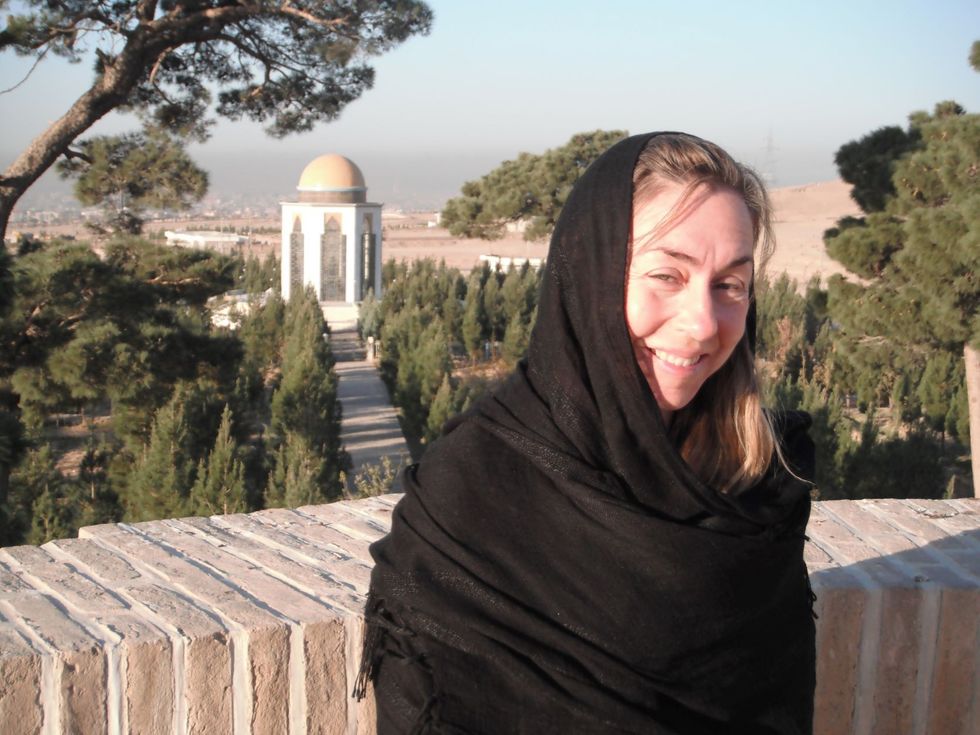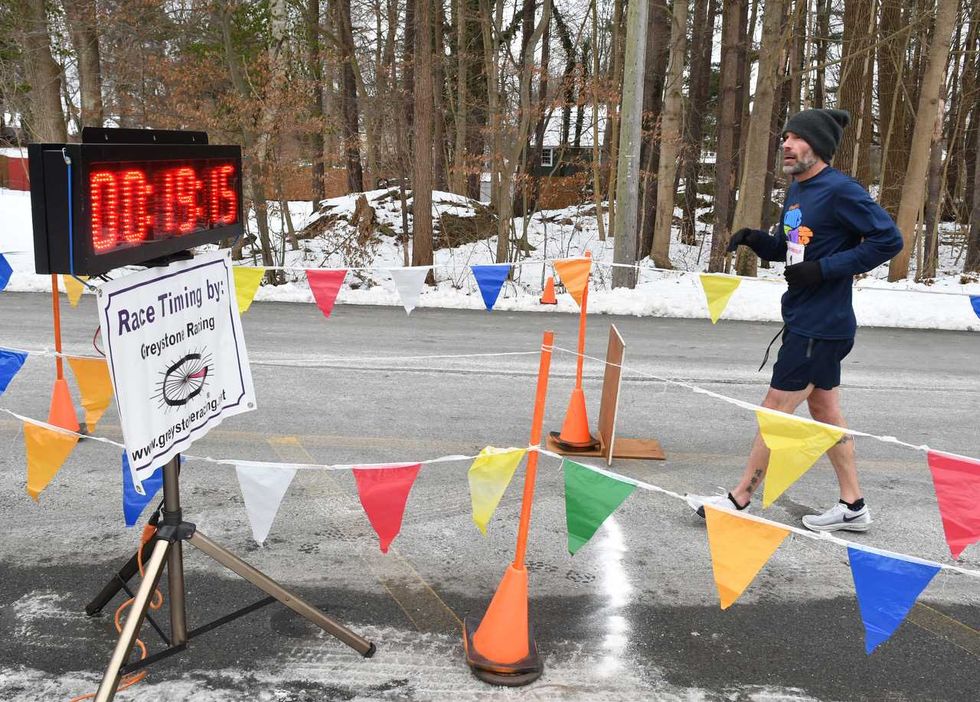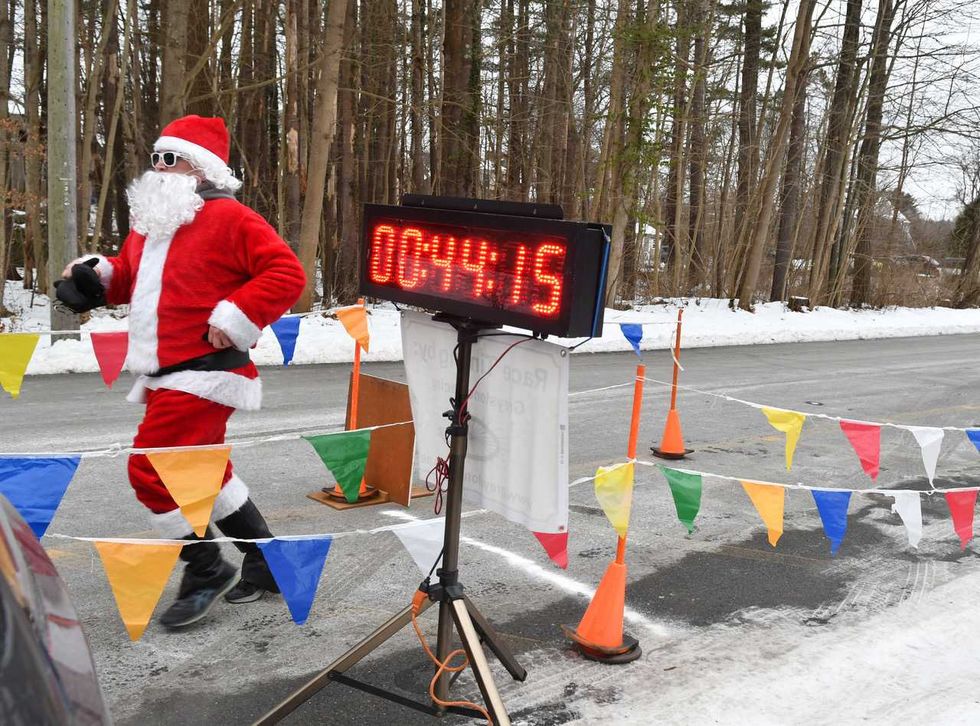Afghanistan: A ‘monuments woman’ whose mission is to save the arts and culture

Laura Tedesco has been working with the U.S. government to save cultural treasures in Afghanistan. Photo Courtesy Laura Tedesco

Many people first learned about the Monuments Men of World War II by reading Robert M. Edsel’s book about them, or seeing the 2014 film “Monuments Men.”
Of course there were many heroic women who also helped protect the cultural treasures of Europe from Hitler, Goering and others.
But the book and the film were primarily concerned with the men who were in charge of the American team tasked with finding and saving some of the great works of Western art.
A new podcast is out now called “Monuments Woman,” and it features an ongoing conversation between two experts in Afghan art and cultural treasures. The idea for the podcast came from producer/director/writer Christian Bruun (whose film “Calendar Girl” is proving to be one of the big draws for this year’s online Berkshire International Film Festival).
When he was living in New York City, Brunn became friends with both George Gavrilis and Laura Tedesco. Tedesco is now an archaeologist and anthropologist working with the U.S. Department of State’s Bureau of South and Central Asian Affairs. Her main area of expertise is Afghanistan. She is the Monuments Woman around whom the podcast is organized.
She and Gavrilis became friends through their shared interest in cultural history in general and Afghanistan in particular; and it was Bruun who came up with the idea that they should team up and do a podcast (the first that Bruun has worked on).
“The idea had been floating around for a while,” Bruun said. “Laura has had the idea in her mind for 10 years that these treasures need to be talked about and not forgotten.”
Gavrilis did a nine-hour oral history interview with Tedesco in spring. The initial idea was to create a documentary format, with narration and a story line.
“But we realized what we had, with the intimacy of these conversations between two friends” and decided to run them in more of an interview style.
This has also allowed the trio to continue to make new episodes; the eighth was “dropped” last week and so far a total of 15 have been recorded. The conversations are all done with a sophisticated virtual conversation software that allows Gavrilis (who is in New York City) and Tedesco (who is in Charleston, S.C.) to speak as though they are sitting side by side. The podcast production company does an initial edit and then Bruun (who is in Los Angeles) listens and makes notes before the final episode is released.
When the first episodes were made, there was some knowledge that the U.S. would withdraw soon from Afghanistan. But there is an immediacy to the events that have followed, with Gavrilis and Tedesco talking about current events as they also talk about ancient history, noting in one episode that Kandahar has just been seized by the Taliban.
Some of the conversation centers around Tedesco’s own life and her decision to travel to a dangerous part of the world while her children are still young. But most of the conversation is about the beauty of Afghanistan and its people and culture — and the threat that exists to both with the takeover by the Taliban.
In an email conversation last week, Tedesco said she can’t comment on what could happen now that the Taliban has returned to power. She did add some details about her work:
“I moved to Kabul in July of 2010 and lived there full time for 16 months. In the winter of 2011, I returned to the States to continue working for the U.S. Dept of State’s Bureau of South and Central Asian Affairs in Washington, D.C., and I traveled to Afghanistan every few months. In total I have made 45 trips to Afghanistan in the past 9 years.”
As the show continues, the conversation goes from more general observations about the nation and its history (including a spree of destruction of statues and other cultural treasures by the Taliban in the 1990s) to more specific observations about particular regions and works of art.
Bruun, who primarily makes documentary films, thinks that the podcast will likely become a film — which would allow the audience to actually see the places and works of art that Tedesco is describing.
The question is whether those works of art will still be around when it’s possible for film crews to return to Afghanistan. Some of course can be seen in photographs. But it’s possible that the descriptions Tedesco shares in Monuments Woman will be the last evidence of many of these works.
Bruun feels hopeful that some of the works will be preserved.
“It’s not an abandoned mission,” he said. “Laura is in South Carolina but she is still working for the government. There is an intent and desire to keep going.”
Of course, as the lives of many Afghanistan natives — especially those who helped the U.S. — are being brutally ended, there is the question of whether art matters anymore. This is one of the topics that Gavrilis and Tedesco discuss. There is no obvious answer; it’s worth listening to hear the thoughtful discussion.
This is an updated version of the story in the Sept. 9 Lakeville Journal.
Runners line up at the starting line alongside Santa before the start of the 5th Annual North Canaan Santa Chase 5K on Saturday, Dec. 13.
NORTH CANAAN — Forty-eight runners braved frigid temperatures to participate in the 5th Annual North Canaan Santa Chase 5K Road Race on Saturday, Dec. 13.
Michael Mills, 45, of Goshen, led the pack with a time of 19 minutes, 15-seconds, averaging a 6:12-per-mile pace. Mills won the race for the third time and said he stays in shape by running with his daughter, a freshman at Lakeview High School in Litchfield.

Don Green, 64, of Red Hook, New York, was second among male runners with a time of 21:17 and a 6:52-per-mile pace. Becky Wilkinson, 47, of Southfield, Massachusetts, was the first woman to cross the finish line with a time of 22:16, averaging a 7:11-per-mile pace. Wilkinson finished fourth overall.
Margaret Banker, 52, of Lakeville, finished second among women runners with a time of 23:59 and a 7:44-per-mile pace.
Runners came from all over Connecticut, Massachusetts and New York. One runner listed home as London, England. Many were members of the Run 169 Towns Society, a group that is dedicated to completing races in every one of Connecticut’s 169 towns. Elizabeth Smith, 32, of Manchester, a member of Run 169, said this was her 162nd town.
“I started 10 years ago,” Smith said. Her husband, Daniel, 33, has run races in 73 Connecticut towns, now including North Canaan. He was eager to know where to get a good cup of coffee after the race.
Santa, who got a head start on the group of runners but finished next to last with a time of 44:14, has been a feature in the North Canaan race since it started five years ago.
The 5K proceeds from a start in front of the North Canaan Elementary School on Pease Street to course around the Town Hall parking lot, up West Main Street past the transfer station to the state line and back. Cheryl Ambrosi, 45, of Danbury, was the last to cross the finish line with her dog Benji. “It was so much fun,” she said as she ended, even though she didn’t catch Santa.

The Torrington Transfer Station, where the Northwest Resource Recovery Authority plans to expand operations using a $350,000 state grant.
TORRINGTON — The Northwest Resource Recovery Authority, a public entity formed this year to preserve municipal control over trash and recycling services in northwest Connecticut, has been awarded $350,000 in grant funds to develop and expand its operations.
The funding comes from the Department of Energy and Environmental Protection via its Sustainable Materials Management grant program. It is intended to help the NRRA establish operations at the Torrington Transfer Station as well as support regional education, transportation, hauler registration and partnerships with other authorities.
Founded by the City of Torrington in May 2025, the NRRA was established to oversee regional municipal solid waste management. Its creation followed a $3.25 million offer by USA Waste & Recycling to purchase the Torrington Transfer Station — a sale that would have privatized trash services in the region.
The proposed sale was initially approved by the MIRA Dissolution Authority, the entity responsible for dissolving the state’s former Materials Innovation and Recycling Authority, which owned the Transfer Station at the time. Before the transaction could close, the state intervened and directed that the facility’s operating permit be assigned to the NRRA to preserve a publicly controlled alternative.
MIRA has since dissolved, and the Transfer Station is currently operated by the state Department of Administrative Services. Many towns in northwest Connecticut have expressed interest in joining the NRRA. As of December, Torrington and Goshen were the only two municipalities in the authority.
At the Dec. 11 meeting of the Northwest Hills Council of Governments (COG) — a regional planning body representing 21 municipalities in northwest Connecticut — Director of Community and Economic Development Rista Malanca encouraged more towns to sign on.
“We need towns to join the Northwest Resource Recovery Authority to show your support, show this is what you want to do,” Malanca said.
Salisbury First Selectman Curtis Rand said his municipality is planning a town meeting in January to vote on a resolution to join the NRRA. Cornwall’s Board of Selectmen recently discussed scheduling a town meeting in the winter for the same purpose. Sharon, Falls Village and North Canaan have also expressed continued interest in pursuing a public option.
Kent is the northernmost member of the Housatonic Resource Recovery Authority, a regional solid waste authority representing 14 municipalities stretching south to Ridgefield. COG towns expressed interest in joining HRRA in 2024, but they were denied and set out to develop the NRRA.
“We also have been having conversations with the Capital Region Council of Governments and the Naugatuck Valley Council of Governments to think about how we can use existing resources, maybe some of these grant funds, to bring in shared resources or shared staffing that will help with some of the recycling coordinating efforts,” Malanca said.
With grant funds secured, NRRA aims to grow to a point that it can take over operations at Torrington Transfer Station to serve as a regional hauling hub. What happens to the trash after that has yet to be determined. Currently, it is being shipped to a landfill out of state. The existing municipal refuse hauling contracts that were established with the state expire in 2027.
The Salisbury Winter Sports Association (SWSA) will host its annual Junior Jump Camp, a two-day introduction to ski jumping, on Saturday and Sunday, Dec. 27 and 28, from 9 a.m. to 2 p.m. at Satre Hill in Salisbury.
The camp is open to children ages 7 and up and focuses on teaching the basics of ski jumping, with an emphasis on safety, balance and control, using SWSA’s smallest hill. No prior experience is required.
The cost is $50 per child and includes instruction and lunch on both days. For more information or to register, visit www.skireg.com/swsa-camp or email info@jumpfest.org
Jesse Bunce, first selectman of North Canaan.
LITCHFIELD — The Northwest Hills Council of Governments welcomed six newly elected municipal leaders Thursday, Dec. 11, at its first meeting following the 2025 municipal elections.
The council — a regional planning body representing 21 towns in northwest Connecticut — coordinates transportation, emergency planning, housing, economic development and other shared municipal services.
Barkhamsted First Selectman Meaghan Cook, Goshen First Selectman Seth Breakell, Kent First Selectman Eric Epstein, Norfolk First Selectman Henry Tirrell, North Canaan First Selectman Jesse Bunce and Torrington Mayor Molly Spino were each elected to their post in November.
They filled the seats of their predecessors on the COG, who were each given a toast of appreciation: Nick Lukiwsky (Barkhamsted), Todd Carusillo (Goshen), Marty Lindenmeyer (Kent), Matt Riiska (Norfolk), Brian Ohler (North Canaan) and Elinor Carbone (Torrington).
COG Executive Director Rob Phillips said the outgoing members were given a going away mug that read “You’re living the dream still.” Members voted to appoint Warren First Selectman Greg LaCava to fill a vacancy on the Council’s Executive Committee. COG members voted by paper ballot, and LaCava defeated Burlington First Selectman Doug Thompson for the vacant seat.